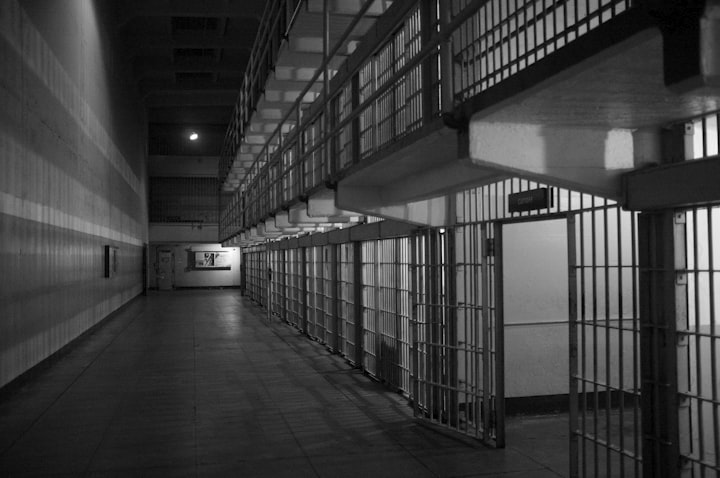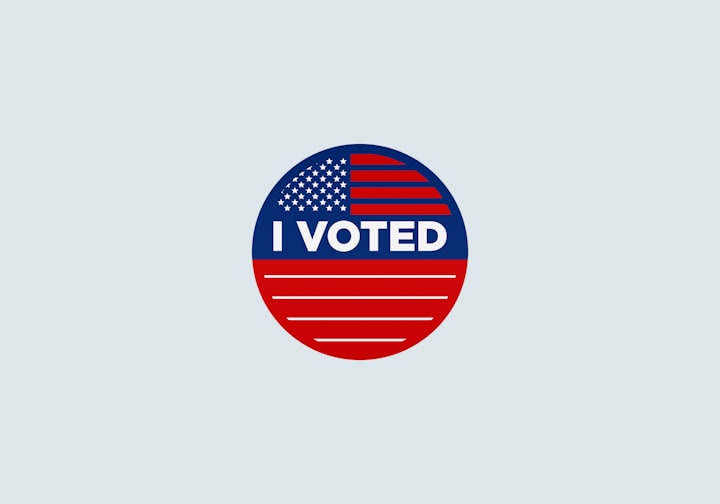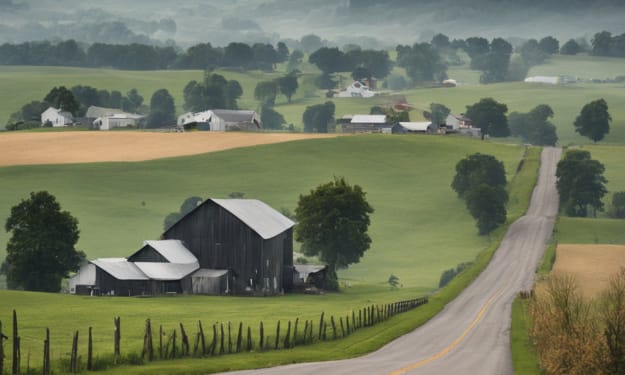13 Things I Learned from the Documentary ‘13th’
"Systems of oppression are durable and they tend to reinvent themselves." -Glenn E. Martin

As I continue to educate myself on racism in America, I watched to highly recommended documentary “13th”. The 13th Amendment of the Constitution states "Neither slavery or involuntary servitude, except as a punishment for a crime whereof the party shall have been duly convicted, shall exist within the United States or any place subject to their jurisdiction." essentially meaning slavery is illegal, but prisoners can be treated as slaves. This documentary was incredibly informative and compelling to say the least. I've compiled notes I took while watching the film in an attempt to stay engaged and hold myself accountable for my education on the matter and created a list of 13 important lessons or information nuggets from the film to extend that information to others and have an easily accessible format for myself for future reference.
1. Post 13th Amendment Incarceration
After the Civil War, and the 13th Amendment was officially in the Constitution, African Americans were arrested in staggering numbers. After having an economic problem when slave labor was no longer readily available, suddenly white people were meant to create their own slave labor. Enter prison labor. Not only did these incarcerations mean these people were once again slaves, it also helped create the narrative that is still alive and well in America; black people are criminals.
2. Leaving the South
I'm sure many people can attest to learning in school that after slavery was abolished, freed slaves moved North to essentially start over. African Americans did not flee to New York, Detroit, Boston, etc. seeking new opportunities, they were refugees fleeing terrorism.
3. The First Mass Incarceration
The 1970's is when the United States experienced it's first bout of mass incarceration. 357,292 people were incarcerated in the 1970's. Compared to the much larger number from 2014 of 2,306,200, it seems silly to say this was mass incarceration. However, until this time, there were no major spikes in the number of incarcerations. The 1970's was also when government spending for police doubled.
4. War on Drugs - Nixon
Nixon declared a War on Drugs in 1971. The War on Drugs made addiction treatment, substance abuse, and recreational use a criminal justice issue instead of a health issue and we still see this behavior today. Nixon used the War on Drugs as an excuse to vilify communities he didn't approve of. "The Nixon campaign in 1968, and the Nixon White House after that, had two enemies: the antiwar left and black people. You understand what I'm saying? We knew we couldn't make it illegal to be either against the war or black, but by getting the public to associate the hippies with marijuana and blacks with heroin, and then criminalizing both heavily, we could disrupt their communities. We could arrest their leaders, raid their homes, break up their meetings, and vilify them night after night on the evening news. Did we know we were lying about the drugs? Of course we did." -John Ehrlichman; Nixon advisor
5. War on Drugs - Reagan
In 1982, President Reagan declared the War on Drugs which negatively affected, mainly, communities of color. When crack cocaine became popular, Reagan pushed this War on Drugs and created a mandatory sentence for any person arrested for crack cocaine. However, crack was known as an inner city problem where as powder cocaine was a suburban problem. Essentially, making the racial divide worse with the mandatory sentencing for one ounce of crack cocaine being the same amount of time as 100 ounces of powder cocaine. Drug law enforcement spending tripled during this time. This War on Drugs was essentially the War on Communities of Color. Lee Atwater was the campaign strategist for Ronald Reagan. During the presidential campaign, Atwater created a strategy to sway the South in favor of Reagan. He's quoted as saying "...all these things you're talking about are totally economic things and the byproduct of them is blacks get hurt worse than whites." essentially meaning the Reagan campaign were planning to and knew they were harming black communities.
6. Bill Clinton and the 1994 Crime Bill
Even though Bill Clinton now admits the 1994 Crime Bill was a mistake, it doesn't take away from the harm that it has done. The Crime Bill introduced the third strike rule and mandatory minimum sentencing. The $30 Billion federal bill is responsible for a massive expansion in the prison system and the militarization of police. It also added 100,000 more police officers to communities.
7. Superpredators
The term 'superpredator' was coined by criminologist and political scientist John J. Dilulio Jr. in the 1990's. A 'superpredator' refers to a teenager who is deemed more likely to commit violent crimes without remorse. The media often portrayed black male teenagers when using this term especially after the 1990 conviction of the 'Central Park 5' or 'Wolfpack'. These five black and Hispanic young men, aged 14-16, were convicted of beating and raping a Central Park jogger with little to no evidence. Each of them spent six to thirteen years in prison. Superpredator was a term used to create fear within homes and fear within communities.
8. The Numbers
I hadn't known how many people were in prison until watching this documentary, and watching the numbers nearly doubling every decade is incredibly eye opening. Like I said, in 1970, there were 357,292 prisoners; in 1980, that number jumped to 513,900. By 1985, there were 759,100 people in prison and in 1990, they reached, 1,179,200. In 2000, 2,015,300; nearly double the inmates in a decade. In 2001, the African American population of prisons was 878,400 meaning over 43% of inmates were black.
9. ALEC
ALEC is the American Legislative Exchange Council. They are a group of politicians and corporations that write bills and laws to be proposed and usually are in favor of the corporations and mostly republican. ALEC are responsible for the stand your ground law that George Zimmermann used as a defense after he shot Trayvon Martin. They are also spearheading the privatization of probation and parole.
10. Privatization
In 1984, the first for profit prison was opened in the US. The company CCA has made over $1.7 billion in profit in these privatized prisons. They are such a money maker because the model is a guaranteed success; there's a steady influx of bodies to generate profit and that profit goes to share holders. These prisons are more often than not held at maximum capacity for maximum profit (and so they look good to the share holders). CCA also capitalized on the privatization of immigration "detention facilities" after Arizona passed SB-1070. These "detention facilities" earn more than $11 million per month.
11. Modern Prison Labor
When I used to think of prison labor, I'd think of movies that depicted chain gangs. Or the movies Holes. People doing manual labor to learn their lesson. It wasn't until Orange is the New Black introduced the panty making job that I realized companies actually use prison labor to make items cheaper. Kind of like sweatshops only they can label the items as 'Made in America'. With further research, I realized I support a lot of businesses that use, profit off of, or just plain support prison labor like Whole Foods, Target, Starbucks, Nintendo, Sara Lee, United Airlines, State Farm insurance, Boeing, Microsoft; the list goes on and on. This was a wake up call to be more informed about the companies I support, know where my money is going, and support small businesses as much as possible.
12. Kalief Browder
97% of people in prison never go to trial, they usually accept a plea bargain out of fear. Kalief Browder was part of the 3% that went to trial. Kalief was arrested when he was 16 years old for alleged robbery. He spent three years at Rikers Island, two of those years in solitary confinement, waiting for trial. While in solitary, he attempted to take his life multiple times. He also attempted to take his life after his release from prison and was in and out of psychiatric facilities until he succeeded on June 6, 2015 at the age of 22. The same year, New York City Council unanimously decided to end solitary confinement for those under the age of 21.
13. Lifetime Likelihood of Imprisonment
The overall likelihood of a white man serving time in a federal prison in his lifetime is one in seventeen. For a black man, that number is one in three. Black men make up only 6.5% of the American population, but make up a staggering 40.2% of the prison population. In 2015, 30% of the African American male population in Alabama had lost their right to vote because of a prior conviction. There are more black people under supervision by the criminal justice system right now than slaves in the 1850's.
What I've learned from this documentary alone is enough to make me go 'Holy crap! Why hasn't anyone told me this before?' which is why I've shared it. It may open someone else's eyes to of the many issues with our political and justice systems. Whether it's admitted or not, the racism in our country is ingrained in our criminal justice system. When you look at the side by side of cases where a white male gets 5%-10% of the time a black male gets for the same crime; same age, same record, same crime, and the discrimination bleeds through. Over the past few weeks, small steps have been made in the right direction in many cities, but we need to keep working and keep fighting until this is a nationwide shift. I will continue to educate myself and I promise not to give up when the hashtag is gone. I hope you will do the same.
About the Creator
Enjoyed the story? Support the Creator.
Subscribe for free to receive all their stories in your feed. You could also pledge your support or give them a one-off tip, letting them know you appreciate their work.







Comments
There are no comments for this story
Be the first to respond and start the conversation.